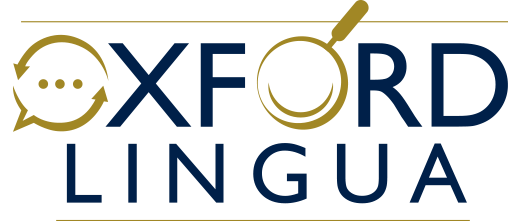
An overview of the functions of interpreters and translators will be useful for companies and individuals looking for such services. Although both professions imply the interaction between people speaking different languages, the interpreter’s and translator’s functions, skills, and working environments are vastly different.
Defining Interpreters and Translators
Interpreting relates to the process of transferring spoken or sign language to another spoken or sign language consecutively or simultaneously. This work entails some puzzle solving and smooth interchangeability of the two languages to get the correct translation. As for the second type of language service, translation entails the act of translating written text from one language to another. While interpreting, interpreters might be faced with a tight deadline and therefore may not spend time weighing down the exact choice of words and how it will be understood by the intended audience in the receiving culture. The primary differences between the two professions are in the type of language that is used, with interpreters using spoken language and translators using written language; and the workflow that takes place in real life for interpreters while the work being done by translators may not necessarily have to be in realtime.
The Role of an Interpreter
Interpreters play a vital role in various settings, such as international conferences, legal proceedings, and medical consultations. There are several types of interpreting:
- Simultaneous Interpreting: The interpreter converts what the speaker says simultaneously, often using headsets and microphones. This is usually seen in conferences and large group meetings.
- Consecutive Interpreting: The interpreter translates the message after the speaker pauses. This type is widely practiced in healthcare, law, and small group settings.
- Whispered Interpreting: The interpreter whispers the translation to a small group or individual, often used when only a few people need translation.
Skills and qualifications required for interpreters include exceptional listening and memory skills, the ability to think and react quickly, and a deep understanding of cultural nuances and contexts.
The Role of a Translator
Translators work with written texts, and their work encompasses various types, including:
- Document Translation: Translating official documents, contracts, and manuals.
- Literary Translation: Translating books, poetry, and other literary works.
- Technical Translation: Translating technical manuals, patents, and scientific research.
Translators must pay particular attention to the writing and editing capabilities of both the source and the translated language in addition to having a well-developed research disposition to enable him/her to gather the right context-specific terminology apart from being culturally sensitive to produce politically correct translations.
Skills Required for Interpreters
Interpreters must be fluent in both the source and target languages, with a strong grasp of idiomatic expressions and cultural references. They need excellent listening and comprehension skills to accurately capture the speaker’s message and tone. Additionally, understanding the cultural context of both languages is crucial to avoid misinterpretations and ensure effective communication.
Skills Required for Translators
Translators should have good writing skills in source and target languages and should be able to pay attention to such things as grammar and style. They have to provide correct translations but at the same time easily understood and interesting to the readers of the outlets. Cultural references of both languages are well understood to achieve a proper translation and create sensitivity to the target audience.
Technological Tools
Both interpreters and translators leverage technology to enhance their work. Interpreters use tools such as simultaneous interpretation equipment, remote interpreting platforms, and terminology databases. These tools aid in real-time translation and ensure accuracy and efficiency.
Translators rely on computer-assisted translation (CAT) tools like SDL Trados Studio or MemoQ, which help manage large translation projects and maintain consistency. Translation memory (TM) databases store previously translated segments, aiding in future translations, while terminology management software ensures standardized use of terminology across different projects.
Industries and Sectors
Interpreting and translation services are essential in various industries:
- Healthcare: Medical interpreters facilitate communication between healthcare providers and patients who speak different languages, ensuring accurate diagnosis and treatment.
- Legal: Court interpreters assist in legal proceedings, ensuring that non-English speakers can fully understand and participate in their cases. Translators in this field work on contracts, court documents, and legal correspondence.
- Business: Interpreters are essential in multinational corporations during negotiations, meetings, and conferences to bridge language gaps. Translators adapt marketing content for global campaigns and translate user manuals and technical guides.
Challenges Faced
Both professions face unique challenges. Interpreters must quickly and accurately convey messages without the luxury of time for reflection or correction. They must navigate cultural nuances and ensure they do not misinterpret or offend, often in high-stress environments.
Translators, on the other hand, must ensure that their translations are contextually accurate and culturally appropriate. They must preserve the original text’s tone, style, and intent, which can be challenging, especially with literary works. Ensuring consistent use of terminology, especially in technical or specialized fields, requires meticulous attention to detail.
When choosing between interpreting and translation services, consider the medium of communication (spoken vs. written), the immediacy of the need, and the specific requirements of your industry. Oxford Lingua can assist in making the right choice, providing expert services tailored to your needs.
Case Studies
Oxford Lingua has numerous success stories showcasing their expertise in language services. Their professional team has delivered high-quality translations for technical manuals, marketing materials, and literary works, helping clients communicate effectively across different languages and cultures.
Frequently Asked Questions
What is the main difference between an interpreter and a translator?
Interpreters work with spoken language in real-time, while translators work with written text, having the time to refine and research their translations.
What qualifications do interpreters need?
Interpreters need language proficiency, excellent listening skills, quick thinking, and cultural awareness. Many also hold certifications from recognized bodies.
What tools do translators use?
Translators use CAT tools, translation memory databases, and terminology management software to ensure consistency and accuracy in their work.
Which industries require interpreting services?
Interpreting services are essential in healthcare, legal proceedings, and business settings, particularly for multinational corporations and international conferences.
Why is cultural awareness important for both interpreters and translators?
Cultural awareness ensures that the message is conveyed accurately and appropriately, preventing misunderstandings and fostering effective communication.
Final Thoughts
Interpreters and translators play critical roles in bridging language gaps, each with their unique skills and challenges. Understanding the differences between these professions can help you choose the right service for your needs. Oxford Lingua’s expertise in translation ensures that you receive top-notch language services tailored to your specific requirements. Contact Oxford Lingua today to learn more about their professional language services.

